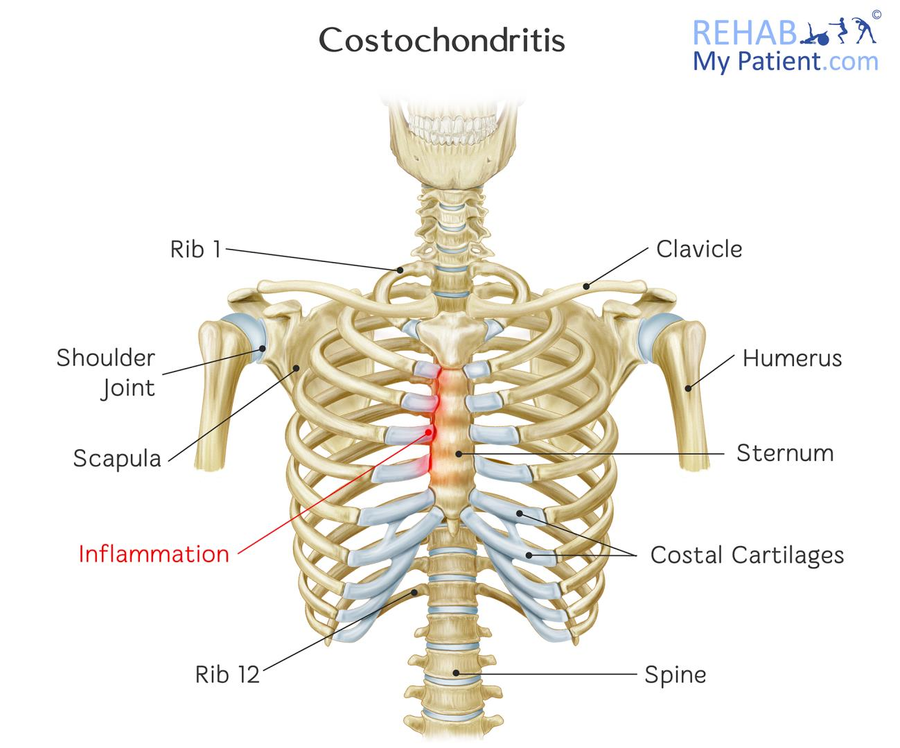Inflammation of chest bone. Costochondritis: Understanding Chest Inflammation and Its Management
What are the symptoms of costochondritis. How is costochondritis diagnosed. What treatments are available for costochondritis. Can costochondritis be prevented. How does costochondritis differ from Tietze syndrome.
Understanding Costochondritis: An Overview of Chest Wall Inflammation
Costochondritis is a condition characterized by inflammation of the costochondral junctions, where the upper ribs connect to the cartilage that attaches them to the breastbone (sternum). This inflammation can cause significant chest pain, often mimicking more serious conditions such as heart attacks. Despite its alarming symptoms, costochondritis is generally harmless and typically resolves without extensive treatment. However, given the similarity of its symptoms to those of cardiac issues, any chest pain in adults should be thoroughly evaluated to rule out heart disease.
Costochondritis affects both children and adults, with a higher prevalence in women. In pediatric populations, it accounts for 10% to 30% of all chest pain cases, with an estimated 650,000 cases annually among individuals aged 10 to 21. The condition peaks in prevalence between the ages of 12 and 14.

Distinguishing Costochondritis from Tietze Syndrome
While often used interchangeably, costochondritis and Tietze syndrome are distinct conditions. The key differences include:
- Onset: Tietze syndrome typically develops suddenly, with pain that may radiate to the arms or shoulders.
- Duration: Pain associated with Tietze syndrome often persists for several weeks.
- Swelling: Tietze syndrome is characterized by noticeable swelling at the point where the ribs meet the breastbone, which is not typically present in costochondritis.
Identifying the Causes and Risk Factors of Costochondritis
The exact etiology of costochondritis remains unclear, but several factors have been associated with its development:
- Repetitive minor trauma to the chest wall
- Overuse of arm muscles
- Underlying arthritis conditions (e.g., osteoarthritis, rheumatoid arthritis, ankylosing spondylitis)
- Tumors metastasizing to the chest area
- Viral respiratory infections
- Bacterial infections, particularly in intravenous drug users or post-surgical patients
- Rare fungal infections
In children and adolescents, carrying heavy backpacks over one shoulder has been identified as a potential risk factor for developing costochondritis.
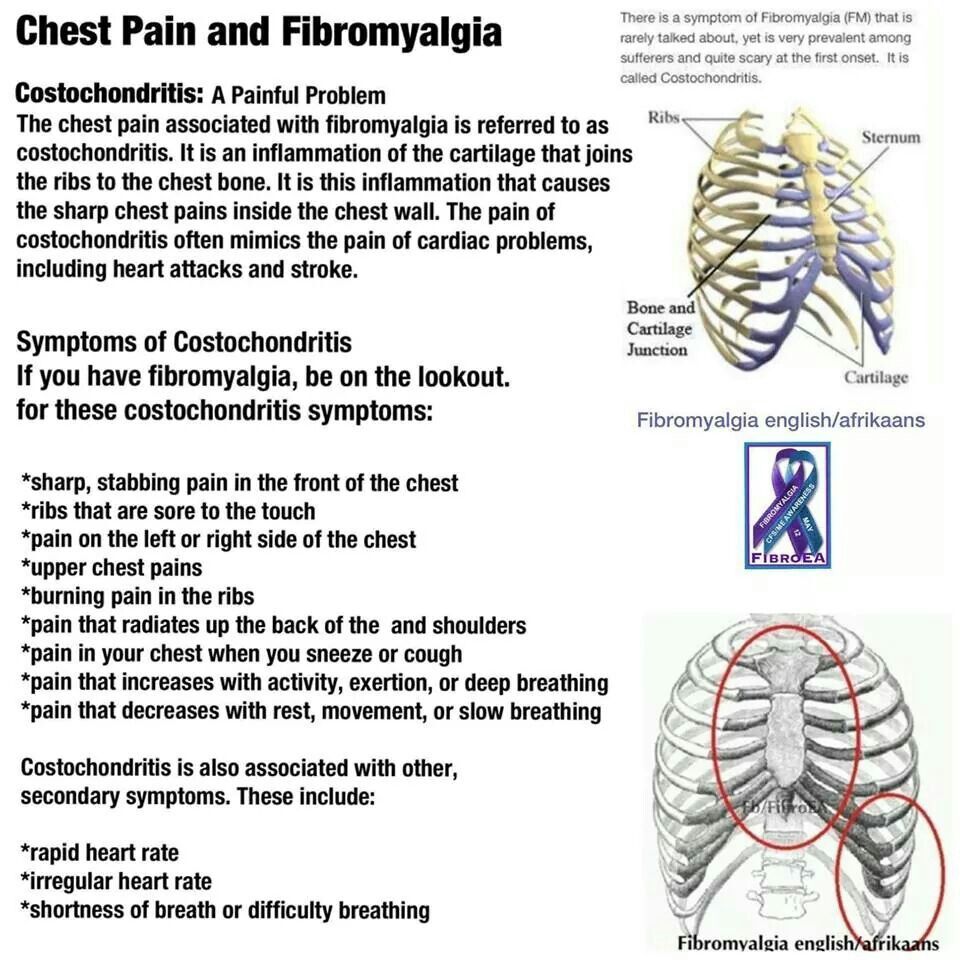
How does physical activity influence the onset of costochondritis?
Physical activity can play a significant role in triggering costochondritis symptoms. The condition often manifests following exercise, minor trauma, or upper respiratory infections. This relationship underscores the importance of proper body mechanics and gradual increases in physical activity to prevent undue stress on the costochondral junctions.
Recognizing the Symptoms of Costochondritis
The primary symptom of costochondritis is chest pain, which typically exhibits the following characteristics:
- Sharp pain in the anterior chest, often localized to the left side where the breastbone and ribs meet
- Pain that may radiate to the back or abdomen
- Exacerbation of pain with deep breathing, coughing, or physical movement
- Tenderness when pressure is applied to the rib joints
In cases where costochondritis develops due to post-surgical infection, additional symptoms may include redness, swelling, or purulent discharge at the surgical site.
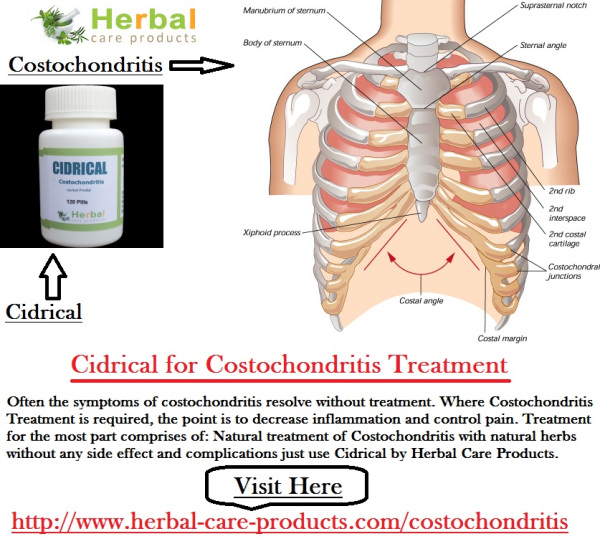
When should medical attention be sought for chest pain?
While costochondritis is generally benign, certain symptoms warrant immediate medical evaluation:
- Difficulty breathing
- High fever unresponsive to antipyretics
- Signs of infection at the tender area (redness, swelling, discharge)
- Persistent or worsening pain despite medication
- Nausea, sweating, or dizziness accompanying chest pain
- Chest pain associated with left arm pain, nausea, and sweating (possible indicators of a heart attack)
Diagnostic Approaches for Costochondritis
Diagnosing costochondritis can be challenging due to the lack of specific diagnostic tests. The process typically involves ruling out more serious conditions and includes:
- Thorough physical examination, focusing on chest wall tenderness
- Echocardiogram (ECG) to assess heart function
- Chest X-rays to evaluate lung and bone structures
- Blood tests to check for markers of heart damage
- In some cases, advanced imaging such as gallium scans to detect infection
For individuals with a history of sternum surgery or at high risk for heart disease, additional tests may be conducted to rule out infection as the cause of chest pain.
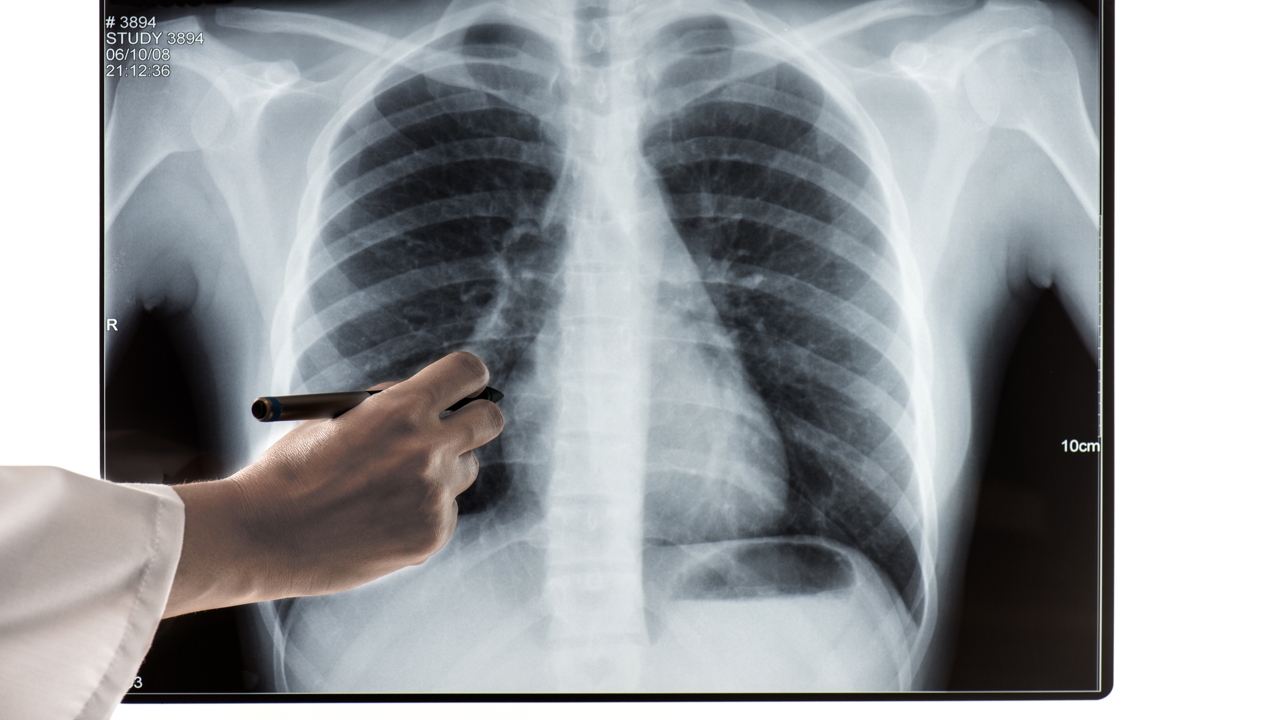
How do healthcare providers differentiate costochondritis from cardiac issues?
Healthcare providers employ a combination of clinical assessment and diagnostic tests to differentiate costochondritis from cardiac conditions. The presence of localized tenderness over the costochondral junctions, absence of ECG abnormalities, and normal cardiac enzyme levels are key factors in distinguishing costochondritis from heart-related chest pain.
Effective Treatment Strategies for Costochondritis
Treatment for costochondritis primarily focuses on symptom management and includes both home remedies and medical interventions:
Home Remedies:
- Over-the-counter nonsteroidal anti-inflammatory drugs (NSAIDs) such as ibuprofen or naproxen
- Application of local heat or ice to the affected area
- Avoidance of activities that exacerbate symptoms
- Gentle stretching exercises to improve chest flexibility
Medical Interventions:
- Prescription-strength pain relievers or anti-inflammatory medications
- In severe cases, local anesthetic or corticosteroid injections
- Physical therapy to improve posture and chest wall strength
- Treatment of underlying conditions if identified (e.g., arthritis management)
What role does rest play in the recovery from costochondritis?
Rest is a crucial component in the recovery process for costochondritis. Limiting activities that strain the chest wall allows the inflamed cartilage to heal. However, complete immobilization is not recommended, as gentle movement and stretching can help maintain flexibility and prevent stiffness.

Preventive Measures and Long-Term Management of Costochondritis
While not all cases of costochondritis can be prevented, certain measures may reduce the risk of occurrence or recurrence:
- Practicing good posture to reduce stress on the chest wall
- Using proper lifting techniques to avoid chest strain
- Gradually increasing the intensity of physical activities
- Maintaining a healthy weight to reduce pressure on the rib joints
- Managing underlying conditions such as arthritis effectively
- For children and adolescents, ensuring proper backpack use and weight distribution
Can lifestyle modifications impact the frequency of costochondritis episodes?
Lifestyle modifications can significantly impact the frequency and severity of costochondritis episodes. Adopting ergonomic practices, maintaining a balanced exercise regimen, and addressing risk factors such as poor posture or repetitive chest wall stress can help reduce the likelihood of developing or exacerbating costochondritis.
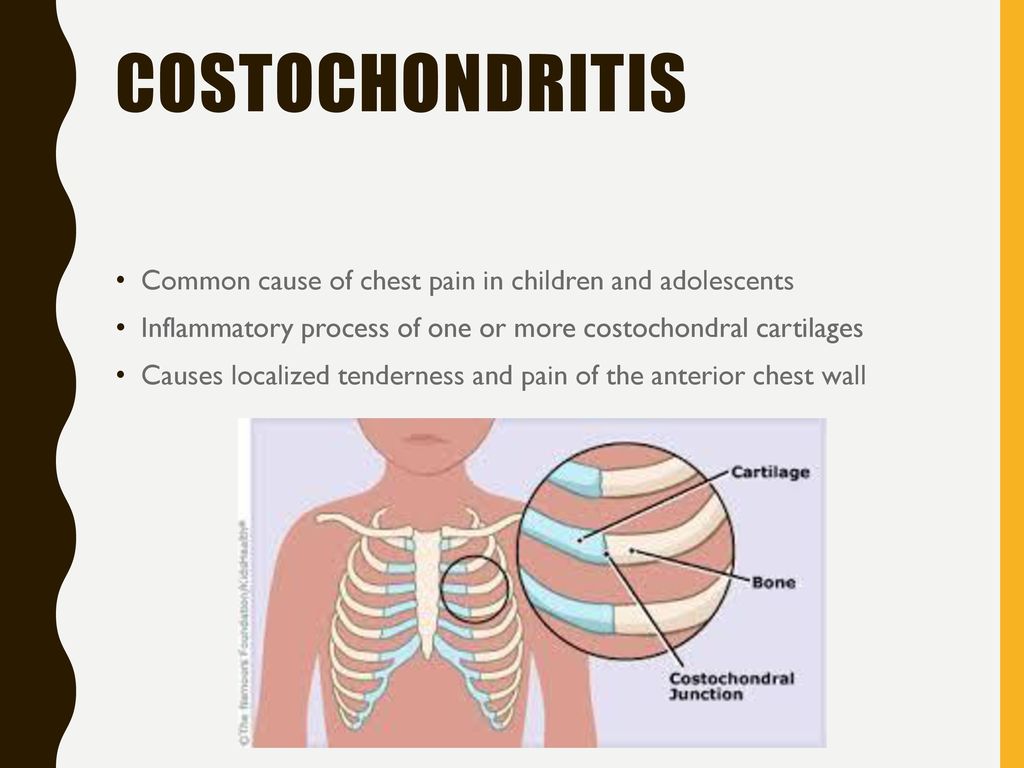
The Prognosis and Long-Term Outlook for Costochondritis Patients
The prognosis for costochondritis is generally favorable. Most cases resolve spontaneously within a few weeks to months, with appropriate management and care. However, some individuals may experience chronic or recurrent episodes, necessitating ongoing management strategies.
Factors influencing the prognosis include:
- The underlying cause of costochondritis
- The individual’s overall health status
- Adherence to treatment recommendations
- Implementation of preventive measures
How does the duration of costochondritis compare in acute versus chronic cases?
Acute costochondritis typically resolves within a few days to weeks with proper management. Chronic cases, defined as lasting more than three months, may require more intensive treatment approaches and lifestyle modifications. The duration can vary significantly among individuals, emphasizing the importance of personalized care and follow-up with healthcare providers.
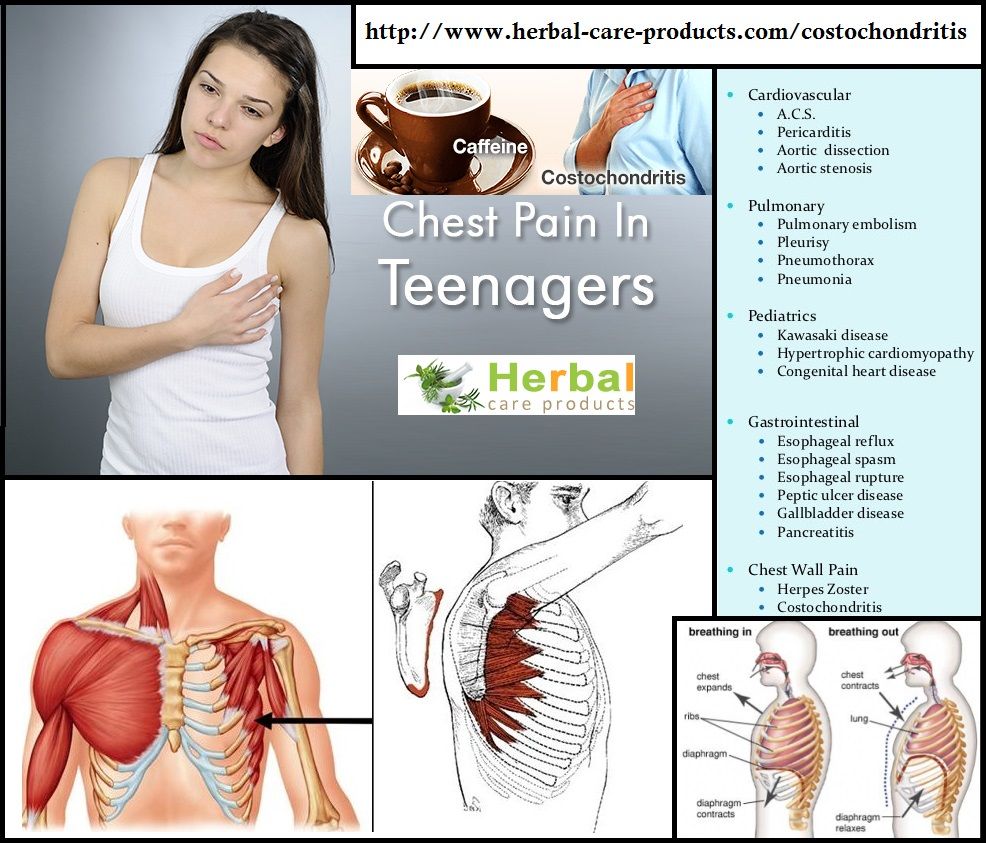
Emerging Research and Future Directions in Costochondritis Management
While costochondritis is a well-recognized condition, ongoing research continues to explore new avenues for diagnosis and treatment:
- Advanced imaging techniques for more precise diagnosis
- Novel anti-inflammatory agents with fewer side effects
- Exploration of regenerative medicine approaches for cartilage repair
- Investigation into the potential role of micronutrients in prevention and treatment
- Development of targeted physical therapy protocols
How might future developments in medical technology impact costochondritis diagnosis and treatment?
Advancements in medical technology hold promise for improving costochondritis management. High-resolution imaging techniques may allow for earlier and more accurate diagnosis, while personalized medicine approaches could lead to tailored treatment plans based on individual genetic and environmental factors. Additionally, wearable devices for pain monitoring and smart textiles for targeted drug delivery are areas of active research that could revolutionize costochondritis care in the coming years.

As research progresses, our understanding of costochondritis continues to evolve, offering hope for improved diagnostic accuracy, more effective treatments, and enhanced quality of life for those affected by this condition. Patients and healthcare providers alike should stay informed about these developments to ensure optimal management strategies are employed.
Costochondritis — Symptoms, Causes, Tests, and Treatment for Costochondritis — from WebMD
Written by WebMD Editorial Contributors
- What Is Costochondritis?
- Costochondritis Causes
- Costochondritis Symptoms
- Costochondritis Risk Factors
- Costochondritis Diagnosis
- Costochondritis Treatment and Home Remedies
- Costochondritis Prevention
- Costochondritis Outlook
- More
Costochondritis is inflammation of the areas where your upper ribs join with the cartilage that holds them to your breastbone. These areas are called costochondral junctions. The condition causes chest pain, but it’s typically harmless and usually goes away without any treatment. But any chest pain in adults should be taken seriously, so you should be examined and tested for heart disease.
A rare condition called Tietze syndrome is often referred to as costochondritis, but the two are distinct conditions. You can tell the difference by the following:
You can tell the difference by the following:
Tietze syndrome usually comes on all of a sudden, with chest pain spreading to your arms or shoulder and lasting several weeks.
Tietze syndrome causes swelling at the painful area (where your ribs and breastbone meet).
Doctors don’t know exactly why costochondritis happens, but they do know that some things can lead to it:
- Repeated minor trauma to your chest wall
- Overuse of your arms
- Arthritis. Costochondritis can sometimes be a sign of osteoarthritis, rheumatoid arthritis, ankylosing spondylitis, or other conditions that affect your cartilage.
- Tumors. These can move from joints and other parts of your body and settle in your chest.
- Respiratory infections caused by viruses
- Bacterial infections, especially in people who use IV drugs or have had surgery near their upper chest
- Fungal infections (in rare cases)
Chest pain linked to costochondritis usually comes on after exercise, minor trauma, or an upper respiratory infection.
- Sharp pain in the front of your chest, near where your breastbone and ribs meet, typically on the left side. It may spread to your back or belly.
- Pain when you take a deep breath or cough. It gets better when you stop moving or your breathing is quieter.
- Tenderness when you press on your rib joints. If you don’t have this tenderness, you probably don’t have costochondritis.
- If costochondritis happens because of an infection after surgery, you’ll have redness, swelling, or pus discharge at the site of the surgery.
Call your doctor if you have any of the following:
- Trouble breathing
- High fever
- Signs of infection such as redness, pus, and increased swelling at the rib joints
- Continuing or worsening pain despite medication
- Nausea
- Sweating
- Dizziness
Go to a hospital’s emergency room if you have a hard time breathing or any of the following.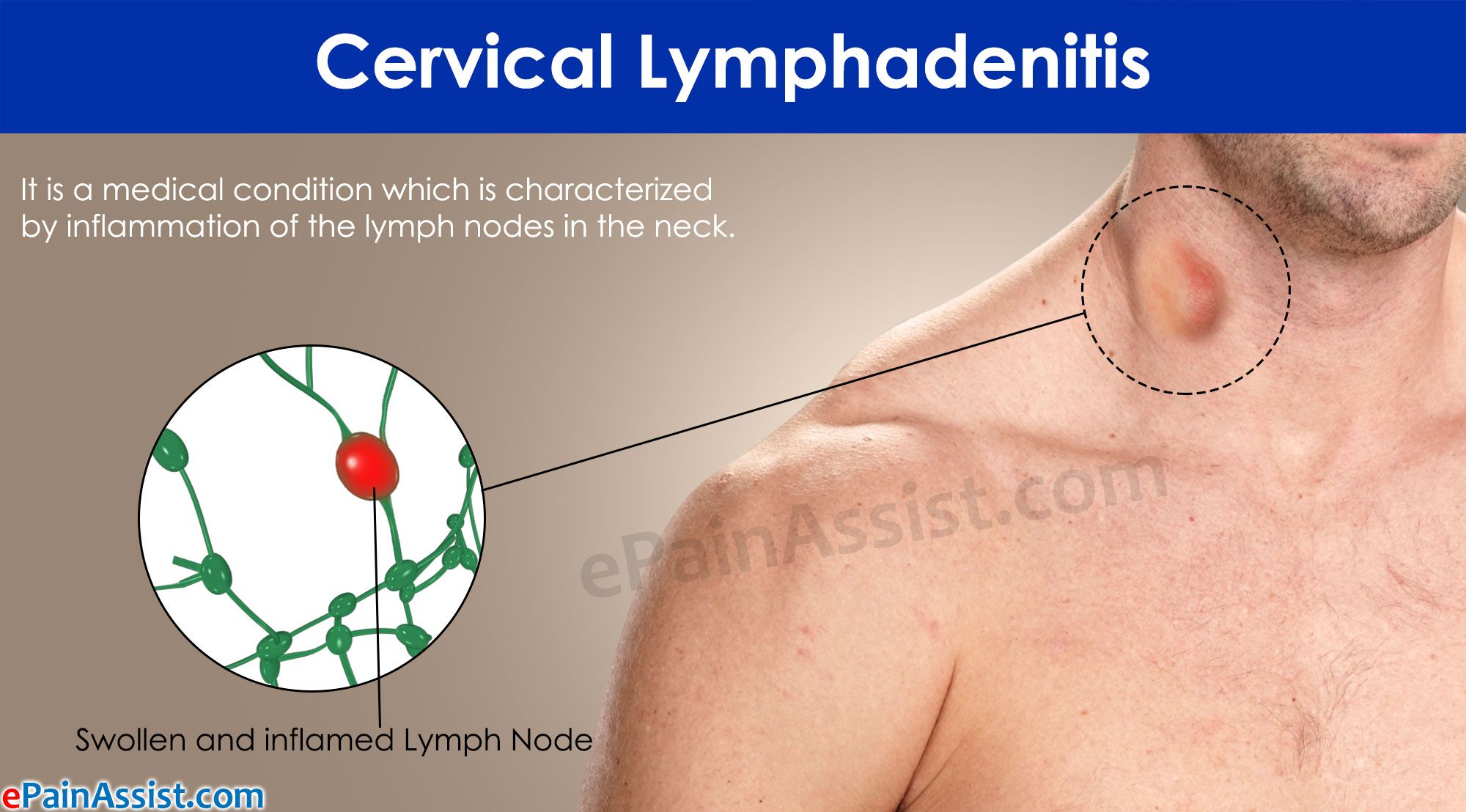 They’re not usually caused by costochondritis:
They’re not usually caused by costochondritis:
- High fever that doesn’t get better with fever reducers such as acetaminophen or ibuprofen
- Signs of infection at the tender spot, such as pus, redness, increased pain, and swelling
- Persistent chest pain of any type when you also have nausea, sweating, or pain in your left arm. These may be signs of a heart attack. If you’re not sure what’s causing your chest pain, go to the emergency room.
Costochondritis is a common cause of chest pain in children and adolescents. It accounts for 10% to 30% of all chest pain in children. Annually, doctors see about 650,000 cases of chest pain in people ages 10 to 21. The peak age for the condition is ages 12-14.
Kids who often carry heavy book bags over one shoulder can be more likely to develop costochondritis.
In adults, costochondritis affects women more than men (70% vs.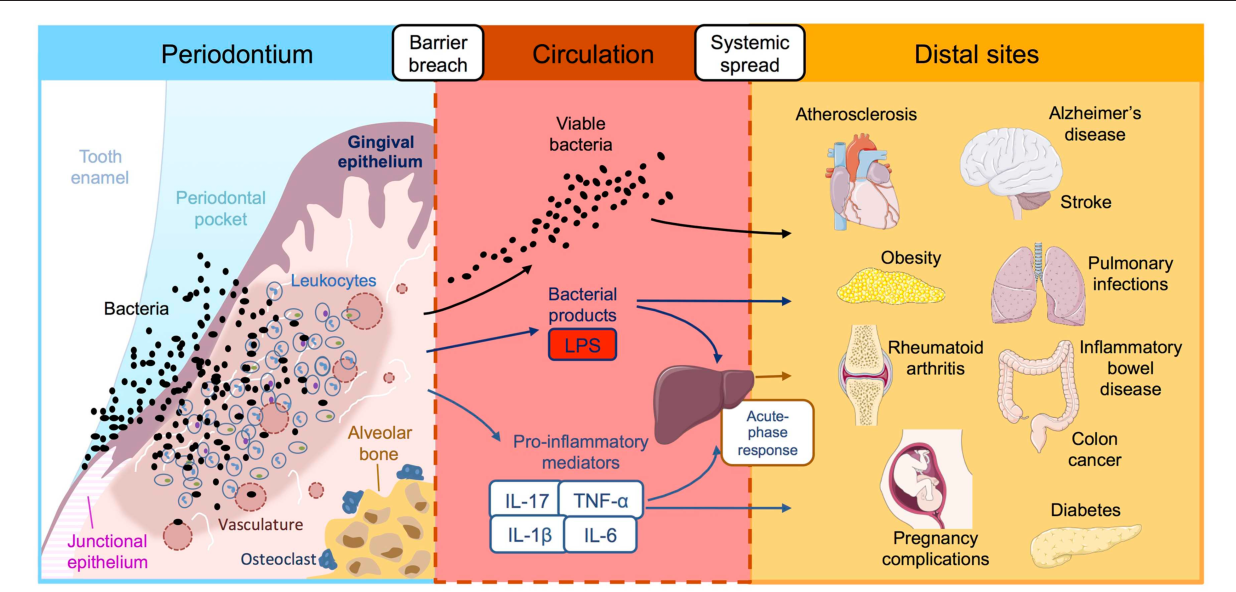 30%).
30%).
There is no specific test for diagnosing costochondritis. To rule out a more serious cause of your chest pain related to your heart or lungs, your doctor will probably start with tests like an echocardiogram (ECG), chest X-rays, and blood test for heart damage, among others.
If those tests come back normal, they’ll likely see if you have tenderness in any of your rib joints, usually over the fourth to sixth ribs.
If you’ve had sternum (breastbone) surgery or are at risk for heart disease, they may recommend getting a test to see if infection is the cause of your chest pain. Doctors will:
- Look for signs of infection such as redness, swelling, pus, and drainage at the site of surgery
- Recommend a more sophisticated imaging study of the chest called a gallium scan, which will show an increase in the radioactive material gallium
- Check your white blood cell count to see if it is high, a sign of infection
- Recommend a chest X-ray if pneumonia might be a cause of your chest pain
Home Remedies for Costochondritis
These home remedies may provide relief from costochondritis:
- Over-the-counter pain relievers such as nonsteroidal anti-inflammatory medications (NSAIDs) like ibuprofen or naproxen as needed
- Using local heat or ice to relieve pain
- Avoiding unnecessary exercise or activities that make the symptoms worse; avoiding contact sports until there is improvement in symptoms, and then returning to normal activities only as tolerated
- Doing stretching exercises
Medications for Costochondritis
Your doctor may suggest the following:
- Prescription-strength NSAIDs.

- A local anesthetic and steroid injection in the area that is tender if normal activities become very painful and the pain doesn’t get better with medicine.
- Narcotics like hydrocodone/acetaminophen (Norco, Vicodin) or oxycodone/acetaminophen (Percocet, Roxicet, Tylox) can help with extreme pain, but, as with any narcotics, there’s danger of becoming addicted to them.
- Steroids. Your doctor can give you a corticosteroid shot directly into a painful joint, but that’s considered something of a last resort.
- Tricyclic antidepressants or cyclic antidepressants like amitriptyline can help ease pain, but they also can have side effects, like weight gain and drowsiness.
- Antiseizure drugs, usually gabapentin (Neurontin), are typically used to treat epilepsy, but they also may help with costochondritis.
- Infectious (bacterial or fungal) costochondritis should be treated with IV antibiotics.
 Afterward, antibiotics by mouth or by IV should be continued for another 2 to 3 weeks. You should see a doctor during recovery, and then once a year.
Afterward, antibiotics by mouth or by IV should be continued for another 2 to 3 weeks. You should see a doctor during recovery, and then once a year.
Surgery for Costochondritis
You may need surgery to remove the sore cartilage if other treatments don’t help. Your doctor can refer you to a surgeon.
Because inflammatory costochondritis has no definite cause, there is no good way to prevent it.
Noninfectious costochondritis will go away on its own, with or without anti-inflammatory treatment. Most people will recover fully.
Infectious costochondritis responds well to IV antibiotics and surgery, but recovery may take a long time.
Top Picks
Costochondritis — Symptoms, Causes, Tests, and Treatment for Costochondritis — from WebMD
Written by WebMD Editorial Contributors
- What Is Costochondritis?
- Costochondritis Causes
- Costochondritis Symptoms
- Costochondritis Risk Factors
- Costochondritis Diagnosis
- Costochondritis Treatment and Home Remedies
- Costochondritis Prevention
- Costochondritis Outlook
- More
Costochondritis is inflammation of the areas where your upper ribs join with the cartilage that holds them to your breastbone. These areas are called costochondral junctions. The condition causes chest pain, but it’s typically harmless and usually goes away without any treatment. But any chest pain in adults should be taken seriously, so you should be examined and tested for heart disease.
These areas are called costochondral junctions. The condition causes chest pain, but it’s typically harmless and usually goes away without any treatment. But any chest pain in adults should be taken seriously, so you should be examined and tested for heart disease.
A rare condition called Tietze syndrome is often referred to as costochondritis, but the two are distinct conditions. You can tell the difference by the following:
Tietze syndrome usually comes on all of a sudden, with chest pain spreading to your arms or shoulder and lasting several weeks.
Tietze syndrome causes swelling at the painful area (where your ribs and breastbone meet).
Doctors don’t know exactly why costochondritis happens, but they do know that some things can lead to it:
- Repeated minor trauma to your chest wall
- Overuse of your arms
- Arthritis.
 Costochondritis can sometimes be a sign of osteoarthritis, rheumatoid arthritis, ankylosing spondylitis, or other conditions that affect your cartilage.
Costochondritis can sometimes be a sign of osteoarthritis, rheumatoid arthritis, ankylosing spondylitis, or other conditions that affect your cartilage. - Tumors. These can move from joints and other parts of your body and settle in your chest.
- Respiratory infections caused by viruses
- Bacterial infections, especially in people who use IV drugs or have had surgery near their upper chest
- Fungal infections (in rare cases)
Chest pain linked to costochondritis usually comes on after exercise, minor trauma, or an upper respiratory infection.
- Sharp pain in the front of your chest, near where your breastbone and ribs meet, typically on the left side. It may spread to your back or belly.
- Pain when you take a deep breath or cough. It gets better when you stop moving or your breathing is quieter.

- Tenderness when you press on your rib joints. If you don’t have this tenderness, you probably don’t have costochondritis.
- If costochondritis happens because of an infection after surgery, you’ll have redness, swelling, or pus discharge at the site of the surgery.
Call your doctor if you have any of the following:
- Trouble breathing
- High fever
- Signs of infection such as redness, pus, and increased swelling at the rib joints
- Continuing or worsening pain despite medication
- Nausea
- Sweating
- Dizziness
Go to a hospital’s emergency room if you have a hard time breathing or any of the following. They’re not usually caused by costochondritis:
- High fever that doesn’t get better with fever reducers such as acetaminophen or ibuprofen
- Signs of infection at the tender spot, such as pus, redness, increased pain, and swelling
- Persistent chest pain of any type when you also have nausea, sweating, or pain in your left arm.
 These may be signs of a heart attack. If you’re not sure what’s causing your chest pain, go to the emergency room.
These may be signs of a heart attack. If you’re not sure what’s causing your chest pain, go to the emergency room.
Costochondritis is a common cause of chest pain in children and adolescents. It accounts for 10% to 30% of all chest pain in children. Annually, doctors see about 650,000 cases of chest pain in people ages 10 to 21. The peak age for the condition is ages 12-14.
Kids who often carry heavy book bags over one shoulder can be more likely to develop costochondritis.
In adults, costochondritis affects women more than men (70% vs. 30%).
There is no specific test for diagnosing costochondritis. To rule out a more serious cause of your chest pain related to your heart or lungs, your doctor will probably start with tests like an echocardiogram (ECG), chest X-rays, and blood test for heart damage, among others.
If those tests come back normal, they’ll likely see if you have tenderness in any of your rib joints, usually over the fourth to sixth ribs.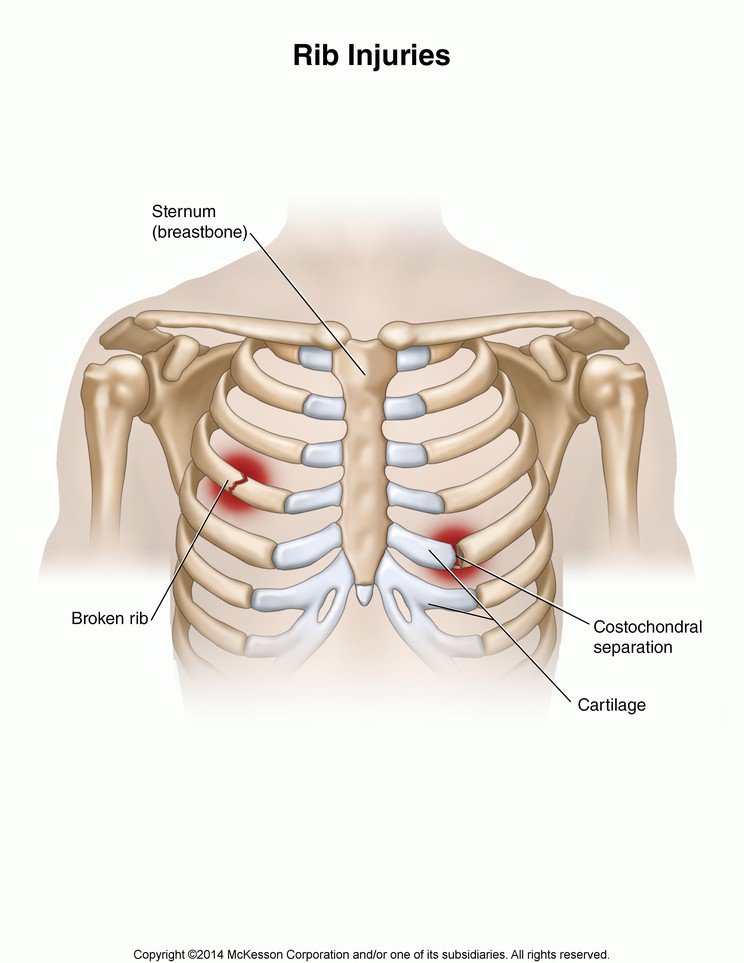
If you’ve had sternum (breastbone) surgery or are at risk for heart disease, they may recommend getting a test to see if infection is the cause of your chest pain. Doctors will:
- Look for signs of infection such as redness, swelling, pus, and drainage at the site of surgery
- Recommend a more sophisticated imaging study of the chest called a gallium scan, which will show an increase in the radioactive material gallium
- Check your white blood cell count to see if it is high, a sign of infection
- Recommend a chest X-ray if pneumonia might be a cause of your chest pain
Home Remedies for Costochondritis
These home remedies may provide relief from costochondritis:
- Over-the-counter pain relievers such as nonsteroidal anti-inflammatory medications (NSAIDs) like ibuprofen or naproxen as needed
- Using local heat or ice to relieve pain
- Avoiding unnecessary exercise or activities that make the symptoms worse; avoiding contact sports until there is improvement in symptoms, and then returning to normal activities only as tolerated
- Doing stretching exercises
Medications for Costochondritis
Your doctor may suggest the following:
- Prescription-strength NSAIDs.

- A local anesthetic and steroid injection in the area that is tender if normal activities become very painful and the pain doesn’t get better with medicine.
- Narcotics like hydrocodone/acetaminophen (Norco, Vicodin) or oxycodone/acetaminophen (Percocet, Roxicet, Tylox) can help with extreme pain, but, as with any narcotics, there’s danger of becoming addicted to them.
- Steroids. Your doctor can give you a corticosteroid shot directly into a painful joint, but that’s considered something of a last resort.
- Tricyclic antidepressants or cyclic antidepressants like amitriptyline can help ease pain, but they also can have side effects, like weight gain and drowsiness.
- Antiseizure drugs, usually gabapentin (Neurontin), are typically used to treat epilepsy, but they also may help with costochondritis.
- Infectious (bacterial or fungal) costochondritis should be treated with IV antibiotics.
 Afterward, antibiotics by mouth or by IV should be continued for another 2 to 3 weeks. You should see a doctor during recovery, and then once a year.
Afterward, antibiotics by mouth or by IV should be continued for another 2 to 3 weeks. You should see a doctor during recovery, and then once a year.
Surgery for Costochondritis
You may need surgery to remove the sore cartilage if other treatments don’t help. Your doctor can refer you to a surgeon.
Because inflammatory costochondritis has no definite cause, there is no good way to prevent it.
Noninfectious costochondritis will go away on its own, with or without anti-inflammatory treatment. Most people will recover fully.
Infectious costochondritis responds well to IV antibiotics and surgery, but recovery may take a long time.
Top Picks
Tietze’s syndrome: symptoms and treatment, causes of the disease costal chondritis
Articles
Reading time 10 min
dreamstime.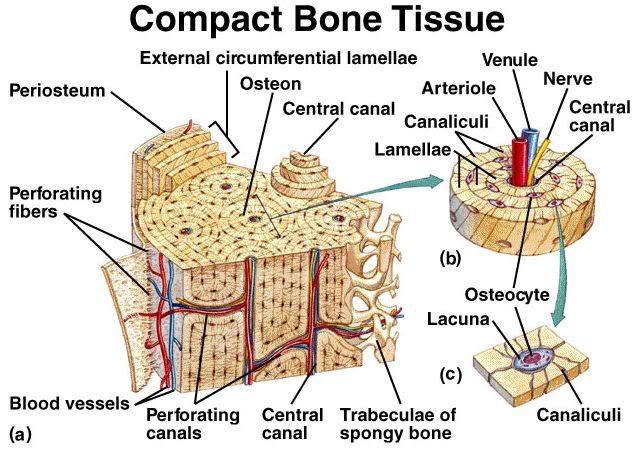 com
com
cartilage. Most often, the pathology occurs in people aged 20-40 years, with the same frequency in men and women. The causes and clinical manifestations are diverse, so in patients with Tietze syndrome, symptoms and treatment can be drastically different. The main manifestation of the disease is chest pain, which also occurs in many pathologies of the internal organs and the musculoskeletal system. Due to the blurring of the clinical picture, it is difficult to make a differential diagnosis.
This article is a recommendation. Treatment is prescribed by a specialist after consultation.
Causes
The first ten pairs of ribs are connected to the sternum through cartilage, forming the costosternal joints, which can be damaged due to overload of the shoulder girdle. Microtraumatization of the perichondrium, the shell of the cartilage, leads to the development of non-infectious inflammation in it. Over time, the cartilage deforms, grows, compresses the surrounding nerve endings, causing pain.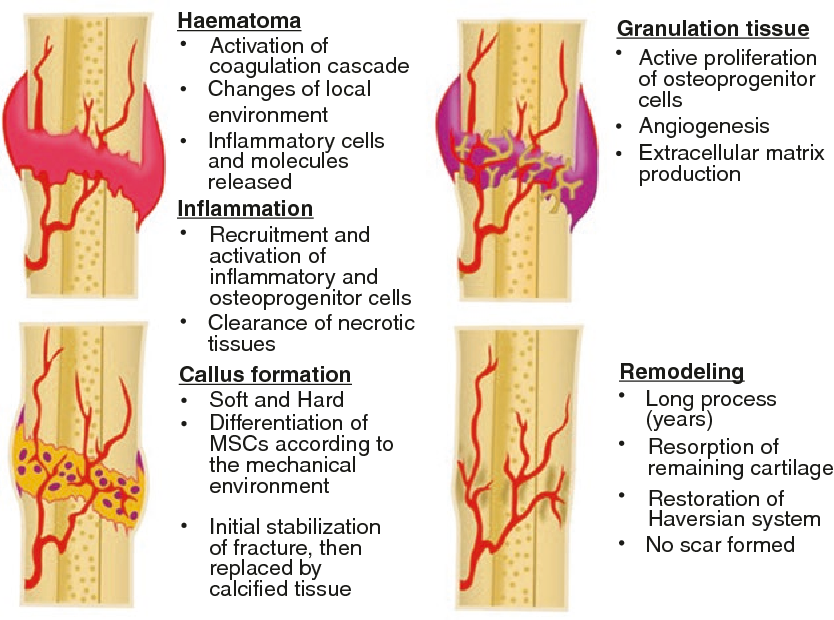 According to histological studies, after two to three months from the onset of the development of Tietze’s syndrome, the cartilage tissue is actually transformed into bone.
According to histological studies, after two to three months from the onset of the development of Tietze’s syndrome, the cartilage tissue is actually transformed into bone.
Fig. 1 Costosternal joints
Tietze’s syndrome is a rare pathology. The reasons for its development can be any diseases that disrupt the metabolism in the connective tissue and reduce immunity, as well as mechanical damage.
Risk factors for the development of Tietze’s syndrome:
The same monotonous physical activity on the arms and chest
Chest injuries
O chest surgery
Metabolic defects in the connective tissue
Costal chondritis – inflammation of the costal cartilages
COPD), bronchial asthma, etc.
Symptoms
The clinical picture of the disease is similar to pneumonia, exacerbation of COPD, bronchial asthma, coronary heart disease, myocardial infarction, intercostal neuralgia and osteochondrosis.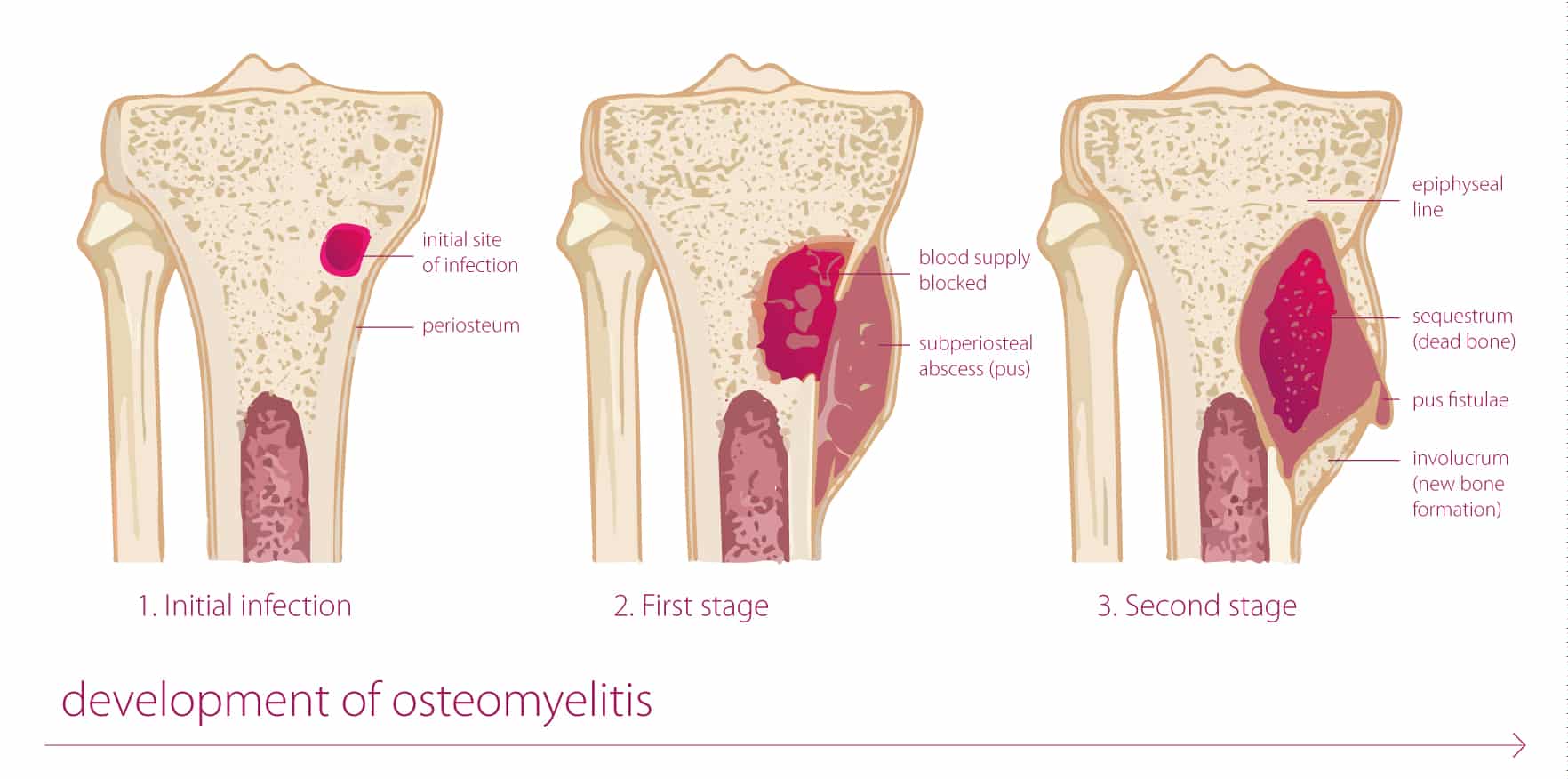
Possible symptoms of cartilaginous rib joint syndrome:
1
Sharp shooting pain in the anterior chest wall. It can hurt on one side, rarely on both. Sometimes it radiates to the neck, back or arms
2
Over time, the pain becomes undulating, aggravated by movement, deep breathing and pressure on the attachment points of the ribs to the sternum
3
900 02 Possible spasm of the sternocleidomastoid muscles located on the anterior-lateral surfaces of the neck, right or left pectoralis major muscle – depending on which side of the chest the ribs are affected
4
Limited range of motion in the neck, right or left shoulder joint, limitation of the depth of inhalation and exhalation
ber with sternum. Education gradually hardens, becoming “bone”. When pressing on it, the pain intensifies, “shoots through”
6
Increase in body temperature up to 38-39 degrees, general weakness, sweating
7
Possible shortness of breath, loss of appetite, insomnia and tachycardia
Symptoms may develop acutely or gradually. Most often, Tietze’s disease of the chest affects the II-IV ribs.
Most often, Tietze’s disease of the chest affects the II-IV ribs.
Diagnosis
The symptoms of Tietze’s syndrome are similar to those of other diseases of systems and organs. In addition, some patients do not have local signs of inflammation, further complicating the diagnosis. An important role is assigned to a thorough clarification of complaints, anamnesis, visual examination and palpation. To clarify the diagnosis, an instrumental examination is often prescribed.
Additional diagnostic options:
- Chest x-ray to rule out lung disease and cancer
- Chest spiral computed tomography (SCT) for better visualization of pathological changes
- MRI chest for soft tissue assessment
- ECG
- Echocardiography, or ultrasound of the heart to rule out cardiac pathology
Which doctor to contact
In case of chest pain, they often turn to cardiologists and neurologists, and in case of induration in the anterior chest wall, to an oncologist. However, Tietze’s syndrome is dealt with by surgeons and orthopedic traumatologists.
However, Tietze’s syndrome is dealt with by surgeons and orthopedic traumatologists.
The doctor conducts a survey and examination of the patient, prescribes additional examinations to clarify the diagnosis. How to treat costal chondritis, the specialist decides, taking into account the cause and severity of the condition.
Make an appointment with a neurologist
Appointment lasts 60 minutes, includes diagnostics, analysis of your MRI and preparation of a treatment plan, takes place both in person and online.
Treatment
At the Temed Clinic, patients with Tietze’s syndrome are treated in a complex manner by several narrow specialists: a neurologist, an orthopedic traumatologist, a masseur, a physiotherapist. Treatment of the disease is conservative. Surgical intervention – removal of the affected part of the rib – is resorted to extremely rarely, with an advanced stage of the disease. The emphasis in the treatment of costal chondritis is on taking medications, physiotherapy.
Medical treatment includes non-steroidal anti-inflammatory drugs (NSAIDs) and, in some cases, glucocorticosteroids to relieve inflammation, localized swelling, and pain.
Tietze’s syndrome often occurs in a chronic form, requiring constant pain relief. But due to long-term use of medications, there are side effects. Therefore, drugs are prescribed only during the period of exacerbation in order to relieve inflammation. The basis of treatment is physiotherapy.
Temed Clinic focuses on modern and effective techniques:
Acupuncture . The doctor introduces special thin needles into biologically active points, stimulating the nerve fibers leading to the pathological focus. Pain intensity decreases and tissue recovery accelerates
Pharmacopuncture . Subcutaneous injections of drugs into the pathological focus relieve inflammation, swelling, stimulate tissue healing and eliminate pain.
 The procedure quickly relieves the patient’s condition. The choice of drugs and their combination depends on the severity of symptoms
The procedure quickly relieves the patient’s condition. The choice of drugs and their combination depends on the severity of symptomsTaping . By fixing the elastic bands along the course of the muscles in a certain direction, the doctor redistributes the load on the joints of the shoulder girdle and chest. Kinesio taping for post-traumatic costal chondritis accelerates recovery, makes you feel better and allows you to reduce the dosage of drugs taken
Magnetotherapy . The modern BTL Super Inductive System technology relieves chest pain, increases the mobility of the costosternal joints and triggers regeneration processes
Laser therapy . MLS 6, a robotic multi-wavelength system, emits various tunable waves. With its help, the doctor achieves analgesic, anti-inflammatory and anti-edematous effects. The laser acts pointwise, the procedure is as safe as possible
exercise therapy .
 Therapeutic exercise for Tietze’s syndrome includes individually selected exercises aimed at improving the mobility of the chest, developing the rib-sternal joints. Exercise therapy is often combined with taping: tapes increase the effectiveness of gymnastics
Therapeutic exercise for Tietze’s syndrome includes individually selected exercises aimed at improving the mobility of the chest, developing the rib-sternal joints. Exercise therapy is often combined with taping: tapes increase the effectiveness of gymnasticsMassage . The specialist kneads the muscles of the chest, which improves the nutrition of soft tissues. The procedure is carried out only after the exacerbation is removed
The treatment lasts from two to three weeks to several months until the symptoms are completely resolved. To improve and consolidate the result of therapy, patients perform exercises for Tietze’s syndrome at home for at least 2 weeks. Costosternal joints can crackle, during their development recovery occurs, nutrition and mobility of the chest as a whole improves.
In case of slow dynamics or its absence during therapy, it is recommended to consult an oncologist and repeat an in-depth examination of the patient with a mandatory puncture biopsy of the chest mass.
Prophylaxis
No specific prophylaxis. Overloading of the shoulder girdle, chest injuries and diseases of the respiratory system should be avoided. To prevent exacerbations, it is enough to follow the simple recommendations of a traumatologist, regularly perform gymnastics, eat a balanced diet and lead an active lifestyle.
Consequences
With timely diagnosis and treatment, the prognosis is favorable. Without therapy, the disease becomes chronic: exacerbations alternate with remissions. The pain may disappear spontaneously after 2-4 weeks, and reappear after a couple of months.
Theses
1
Tietze’s syndrome is a rare disease characterized by non-infectious inflammation of one or more upper costal cartilages where the ribs meet the sternum
2
The main symptom of Tietze’s syndrome is chest pain and an elastic mass on the anterior chest wall
3
4
Treatment of Tietze’s syndrome is based on drugs, physiotherapy and therapeutic exercises
List of sources:
- Shesternya P.
 A., Vasilyeva A.O., Shkil L.M., Onishchenko S.B., Mikhailova K.O., Nikitina M.A., Siberian Medical Review magazine, article “Tietze syndrome – an interdisciplinary clinical case”, 2017, Krasnoyarsk.
A., Vasilyeva A.O., Shkil L.M., Onishchenko S.B., Mikhailova K.O., Nikitina M.A., Siberian Medical Review magazine, article “Tietze syndrome – an interdisciplinary clinical case”, 2017, Krasnoyarsk. - Vodoevich V.P., Breido A.A., Varnakova G.M., Lemeshevskaya P., Masilevich A.M. Grodno, Belarus.
- Zhukovskaya A.O., Moskalenko I.S., journal “Symbol of Science”, article “Titze’s disease (costal chondritis)”, 2017,
Use the website chat to get a response within 5 minutes . Choose a communication channel convenient for you to communicate with the operator.
Share on social networks:
Intercostal neuralgia: symptoms and treatment
Pinched nerves with paroxysmal pain in the chest area is intercostal neuralgia. Sometimes pain sensations are similar to those that accompany heart attacks. That is why the appearance of neuralgia in a patient causes panic.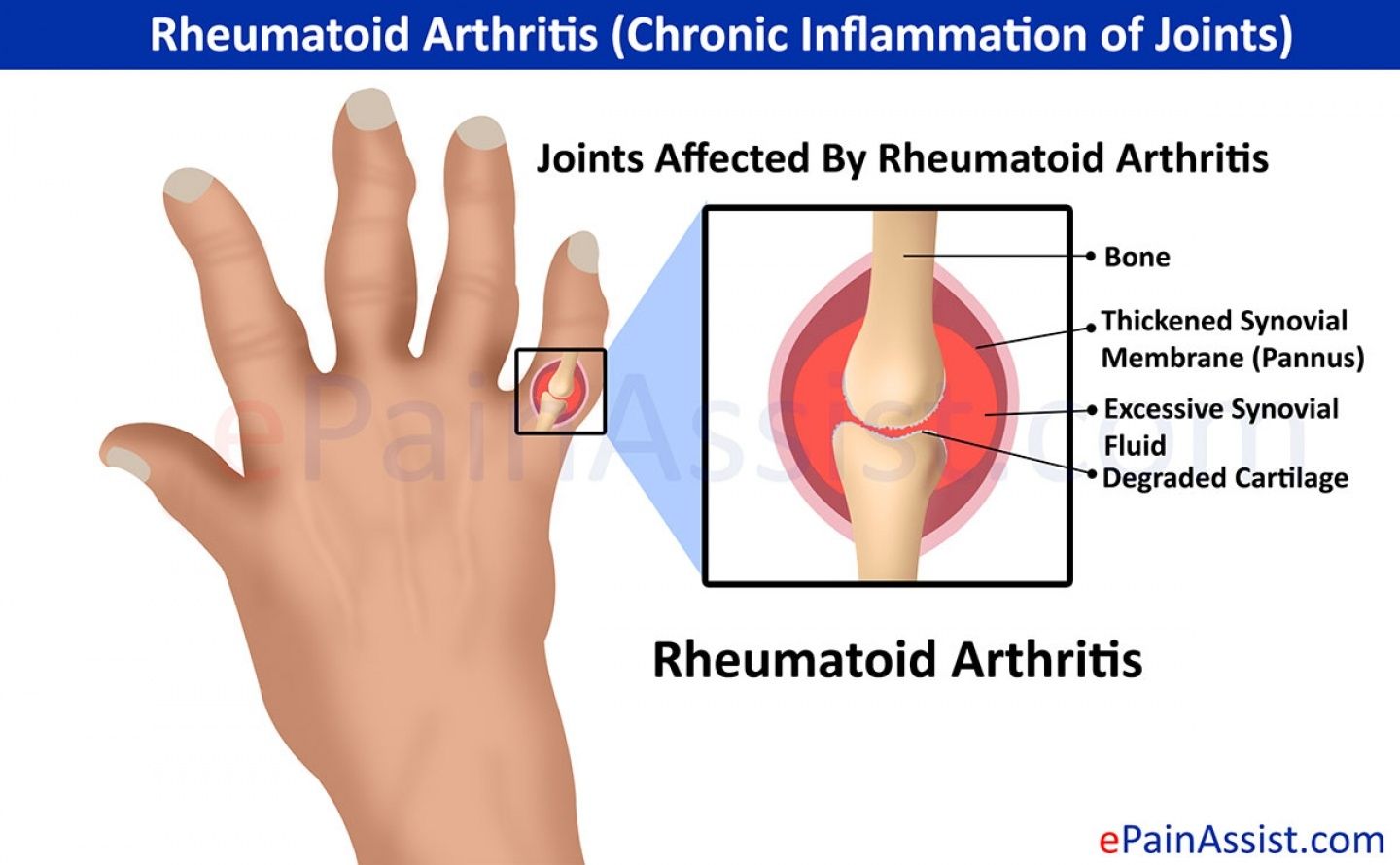
Neuralgia can affect any part of the body, causing mild to severe pain.
Causes of pathology
The reasons for the development of neuralgia can be different: inflammatory processes, injuries, bacteria and viruses, poisoning with drugs and various substances, autoimmune diseases, impaired blood circulation in the vessels that feed the nerve.
infections, such as shingles, Lyme disease, or HIV
pressure on the nerves of bones, blood vessels, or tumors
kidney disease or diabetes
age
What are the symptoms of intercostal neuralgia?
Sudden episodes of severe shooting or stabbing pain that follows the path of an injured or irritated nerve. Symptoms appear either on the right or left side. The pain gets worse with any movement.
Constant aching or burning pain.
Tingling or numbness.

Muscle weakness.
Loss of muscle mass or atrophy.
Involuntary muscle twitching or spasms.
In children, characteristic pain occurs during a period of intensive growth, when the skeleton is growing rapidly. Severe pain in the affected areas and convulsions are the main symptoms of neuralgia, by which the disease is recognized in children. Additional signs include profuse sweating, irritability, tearfulness, sleep disturbance, and stuttering.
The main goal of treatment is to distinguish this disease from others. It is important to distinguish attacks of neuralgia from manifestations of a heart attack and angina pectoris. With neuralgia, there is no fever, shortness of breath, respiratory failure, blue skin.
Diagnostic methods
You need to see a general practitioner. After examining and excluding other pathologies, the therapist refers to a neurologist, who is engaged in identifying symptoms and treating intercostal neuralgia. The doctor examines the pictures, prescribes tests and medical examinations.
The doctor examines the pictures, prescribes tests and medical examinations.
Instrumental diagnostic methods of examination:
Radiography. Allows you to examine the structure of the bone. It makes it possible to determine the presence of violations of a non-traumatic or traumatic nature. X-rays are taken in direct, oblique and lateral projection.
CT scan. Explores the bone and muscle structure in the complex. Often used to detect pathological changes in bone structures.
Myelography. A contrast agent is injected into the spinal canal. This is the main method for diagnosing soft tissue structures (nerve roots and spinal cord).
Contrasting discography. During the procedure, a contrast agent is injected into the intervertebral disc.
Magnetic resonance imaging. Allows you to get images of organs and tissues. It reveals pathological changes in soft tissue structures: nervous tissues, muscles, ligaments, hernias and degenerative changes in intervertebral hernias.

Electrospondylography. Using the method of computer diagnostics, it is possible to assess the condition of the spinal column, identify the disease at an early stage, determine the degree of damage and control the course of the disease.
How is neuralgia treated?
If you experience pain and a pinched nerve, you should contact a therapist, or call an ambulance team if the pain is unbearable. Then you must definitely visit a neurologist – he will determine the true cause of sudden pain and send you for a comprehensive examination. Do not forget to strictly follow all the instructions of the attending physician – they are selected on the basis of medical history, existing diseases and individual characteristics of the body.
Treatment of intercostal neuralgia
Medical therapy. There is a wide variety of drugs to eliminate a pinched nerve: painkillers, anti-inflammatory drugs that increase the body’s defenses, injections, blockades.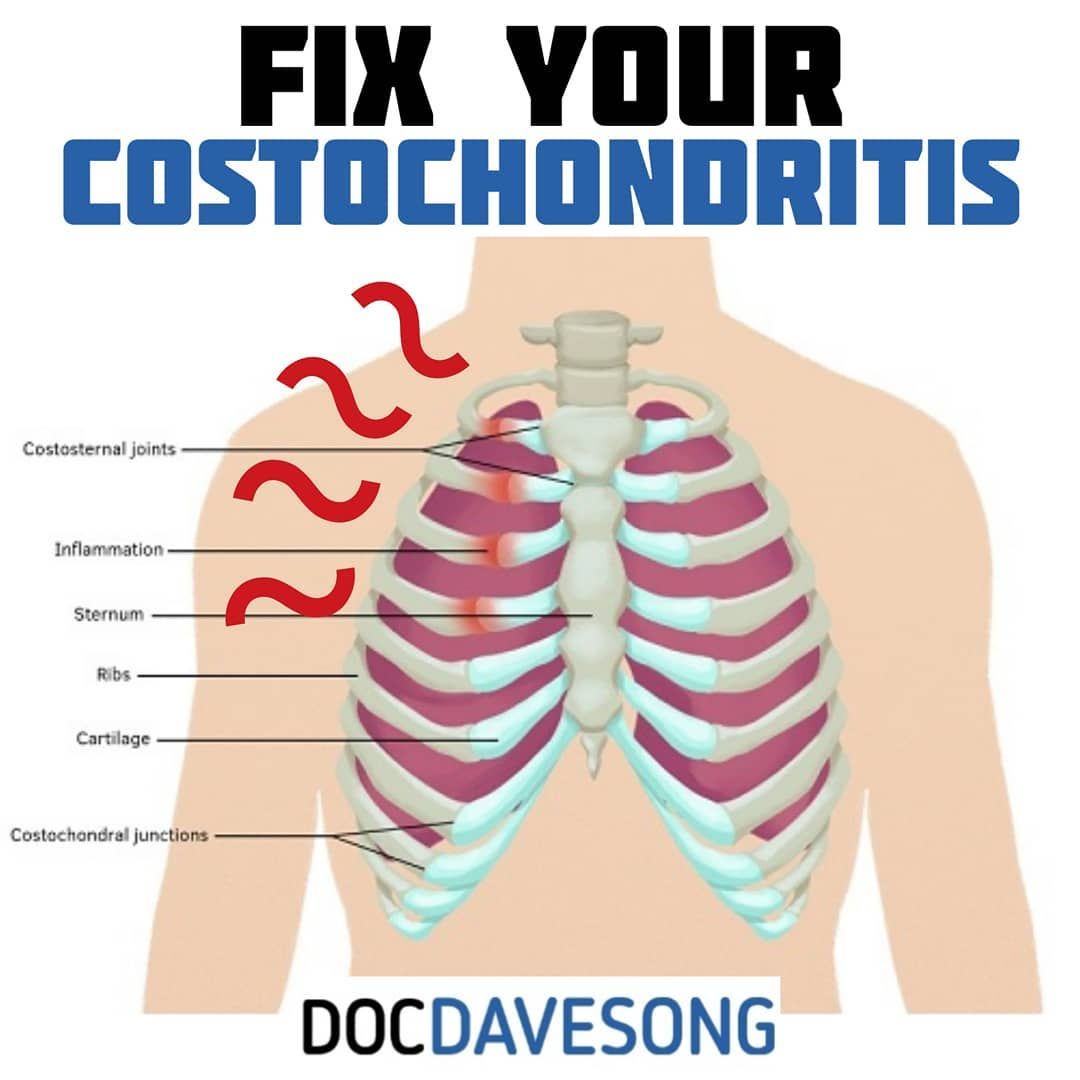 All drugs have a long list of side effects, so before using them, you need to consult a specialist. Any medicine is chosen depending on the severity, the tendency to allergies, the characteristics of the course of the disease.
All drugs have a long list of side effects, so before using them, you need to consult a specialist. Any medicine is chosen depending on the severity, the tendency to allergies, the characteristics of the course of the disease.
Anticonvulsants inhibit the conduction of pain impulses.
Tricyclic antidepressants relieve tension in chronic pain syndromes.
Venotonics and diuretics relieve swelling.
Corticosteroid drugs are used in case of a severe inflammatory process.
Vitamins B1, B6 and B1 accelerate the restoration of the nerve sheath, reduce inflammation and pain.
Compresses. They can be both hot and cold. They are used to reduce inflammation, as well as to reduce pain. This is only a temporary measure that does not have a therapeutic effect.
Other methods: gymnastics, shock wave therapy, massage, physiotherapy – alleviate your condition, ensuring a complete recovery.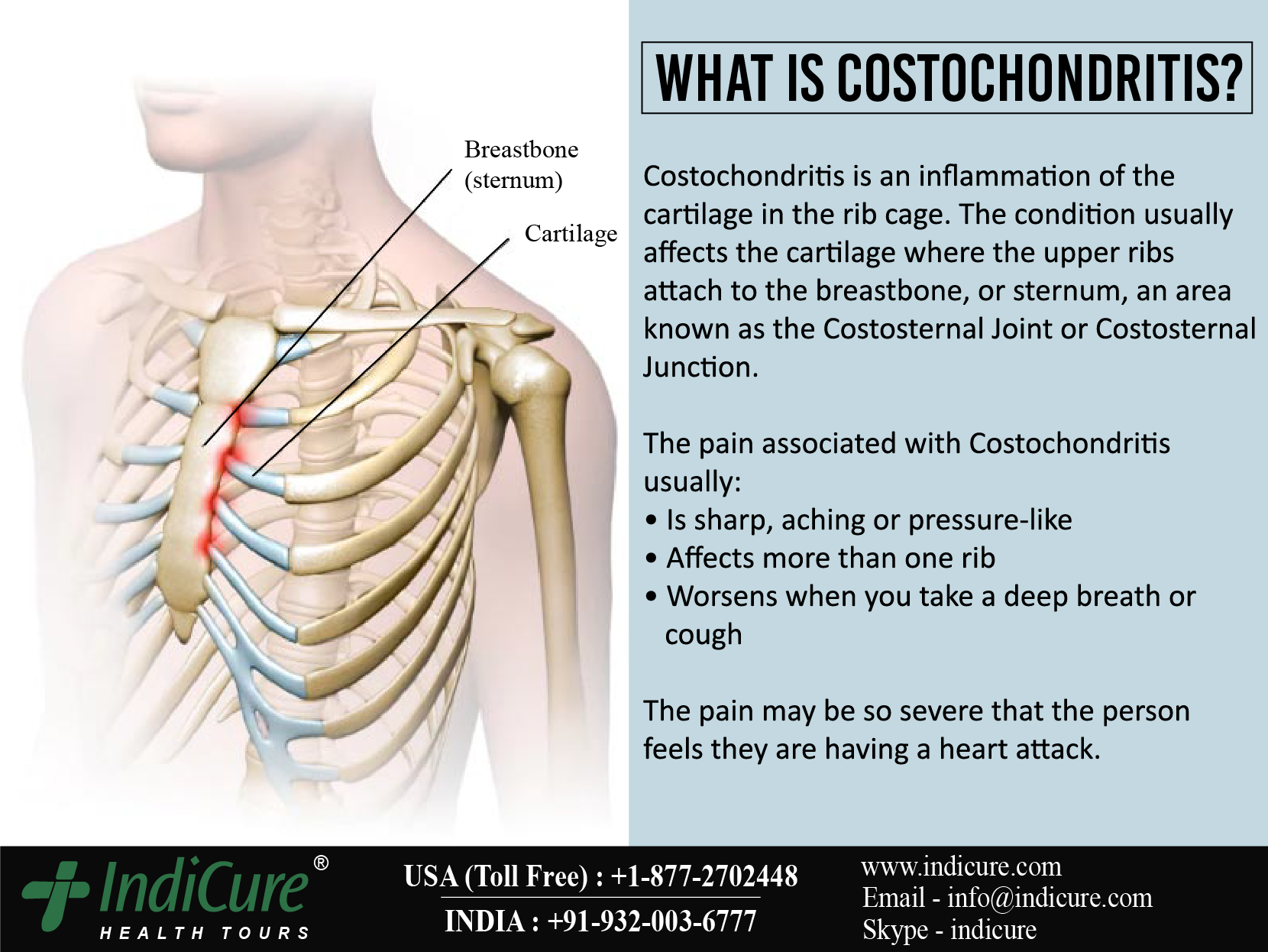 And also these procedures do not harm the body.
And also these procedures do not harm the body.
Physiotherapy and exercise therapy. Often, intercostal neuralgia is caused by poor posture. The goal of physiotherapy exercises is to unload the muscles of the back and open the chest. Therapeutic exercises should be performed 3-4 times a day.
Acupuncture, osteopathy, manual therapy, massage with warming creams and ointments, kinesio taping are used as physiotherapy. They relax the fascia of the chest and back. Heat helps to temporarily relax the muscles, relieve swelling, inflammation and acute pain.
Massotherapy. It should be done while sitting. When performing the procedure, the intercostal spaces are rubbed and stroked with your fingertips. In addition to this, both hands knead and rub the back muscles. With acupressure, fingers press on the active points associated with one or another affected organ. Acupressure is able to stimulate the defenses, relieve pain.
Treatment of intercostal neuralgia during pregnancy
During pregnancy, the presence of neuralgia is considered a fairly serious problem. It requires due attention, which will help to avoid complications for the expectant mother and baby.
It requires due attention, which will help to avoid complications for the expectant mother and baby.
All treatment that will be carried out by a pregnant woman with neuralgia must be prescribed by the attending physician. Self-therapy is highly undesirable, as it can greatly harm the woman and the child in the womb.
Many patients choose not to take medication. They limit themselves to vitamins and mineral complexes, use ointments and warm compresses, observe bed rest and perform simple physical exercises.
Gymnastics for neuralgic pain in pregnant women is very effective. Physical exercises do not allow blood to stagnate in the joints and spine.
If the pain becomes unbearable, novocaine blockades are prescribed with caution.
Prevention of intercostal neuralgia
The main measure of prevention is gymnastics. It is necessary to perform exercises that contribute to the development of muscles, strengthening and mobility of the spine.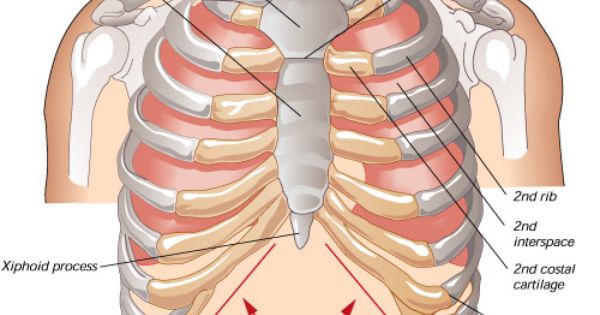 Avoid drafts, uncomfortable positions and excessive physical activity. Everything should be in moderation.
Avoid drafts, uncomfortable positions and excessive physical activity. Everything should be in moderation.
It is important to control your posture, not to lift excessive weights, to eat rationally and balanced, take vitamins, avoid starvation and mono-diets.
Do not forget to carry out the therapy of diseases that can cause the development of neuralgia in time.
Where can I get diagnostics and treatment of intercostal neuralgia?
How to treat intercostal neuralgia is known at the Medunion Medical Center. We treat intercostal neuralgia in Krasnoyarsk.
We have practicing neurologists who do not have to wait several weeks for appointments. Sign up today for a convenient time for you, and tomorrow you will be examined. Powerful equipment for CT, MRI and X-rays, experienced doctors who, if necessary, will conduct an initial examination at home, are waiting for you at Mediunion.
In our clinic you can:
get advice from an experienced narrow specialist without a queue and waiting
undergo diagnostics on modern equipment of international class
call a narrow-profile specialist to the house if necessary
take advantage of the collection of biomaterials at home
For more information or to make an appointment, call +7 (391) 201-03-03.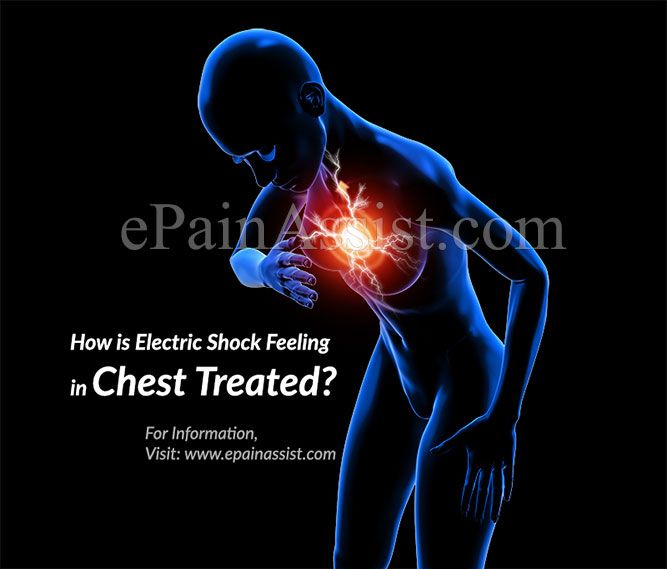


 Afterward, antibiotics by mouth or by IV should be continued for another 2 to 3 weeks. You should see a doctor during recovery, and then once a year.
Afterward, antibiotics by mouth or by IV should be continued for another 2 to 3 weeks. You should see a doctor during recovery, and then once a year.  Costochondritis can sometimes be a sign of osteoarthritis, rheumatoid arthritis, ankylosing spondylitis, or other conditions that affect your cartilage.
Costochondritis can sometimes be a sign of osteoarthritis, rheumatoid arthritis, ankylosing spondylitis, or other conditions that affect your cartilage.
 These may be signs of a heart attack. If you’re not sure what’s causing your chest pain, go to the emergency room.
These may be signs of a heart attack. If you’re not sure what’s causing your chest pain, go to the emergency room.
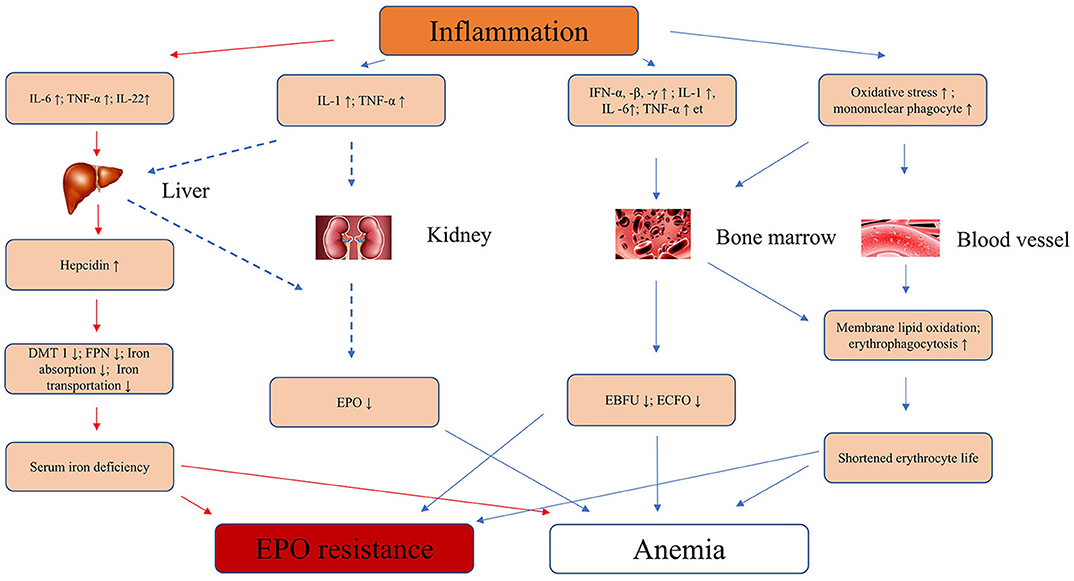 Afterward, antibiotics by mouth or by IV should be continued for another 2 to 3 weeks. You should see a doctor during recovery, and then once a year.
Afterward, antibiotics by mouth or by IV should be continued for another 2 to 3 weeks. You should see a doctor during recovery, and then once a year.  The procedure quickly relieves the patient’s condition. The choice of drugs and their combination depends on the severity of symptoms
The procedure quickly relieves the patient’s condition. The choice of drugs and their combination depends on the severity of symptoms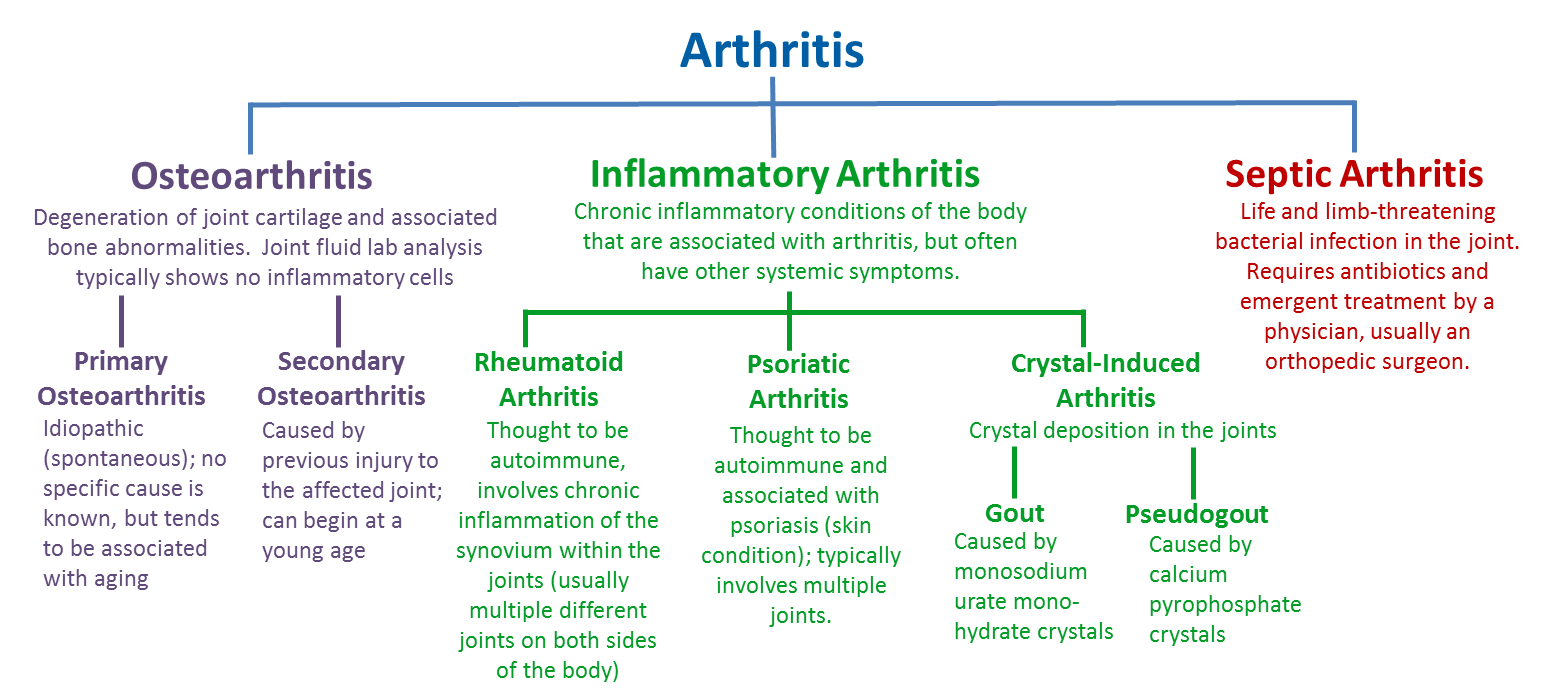 Therapeutic exercise for Tietze’s syndrome includes individually selected exercises aimed at improving the mobility of the chest, developing the rib-sternal joints. Exercise therapy is often combined with taping: tapes increase the effectiveness of gymnastics
Therapeutic exercise for Tietze’s syndrome includes individually selected exercises aimed at improving the mobility of the chest, developing the rib-sternal joints. Exercise therapy is often combined with taping: tapes increase the effectiveness of gymnastics A., Vasilyeva A.O., Shkil L.M., Onishchenko S.B., Mikhailova K.O., Nikitina M.A., Siberian Medical Review magazine, article “Tietze syndrome – an interdisciplinary clinical case”, 2017, Krasnoyarsk.
A., Vasilyeva A.O., Shkil L.M., Onishchenko S.B., Mikhailova K.O., Nikitina M.A., Siberian Medical Review magazine, article “Tietze syndrome – an interdisciplinary clinical case”, 2017, Krasnoyarsk. 
